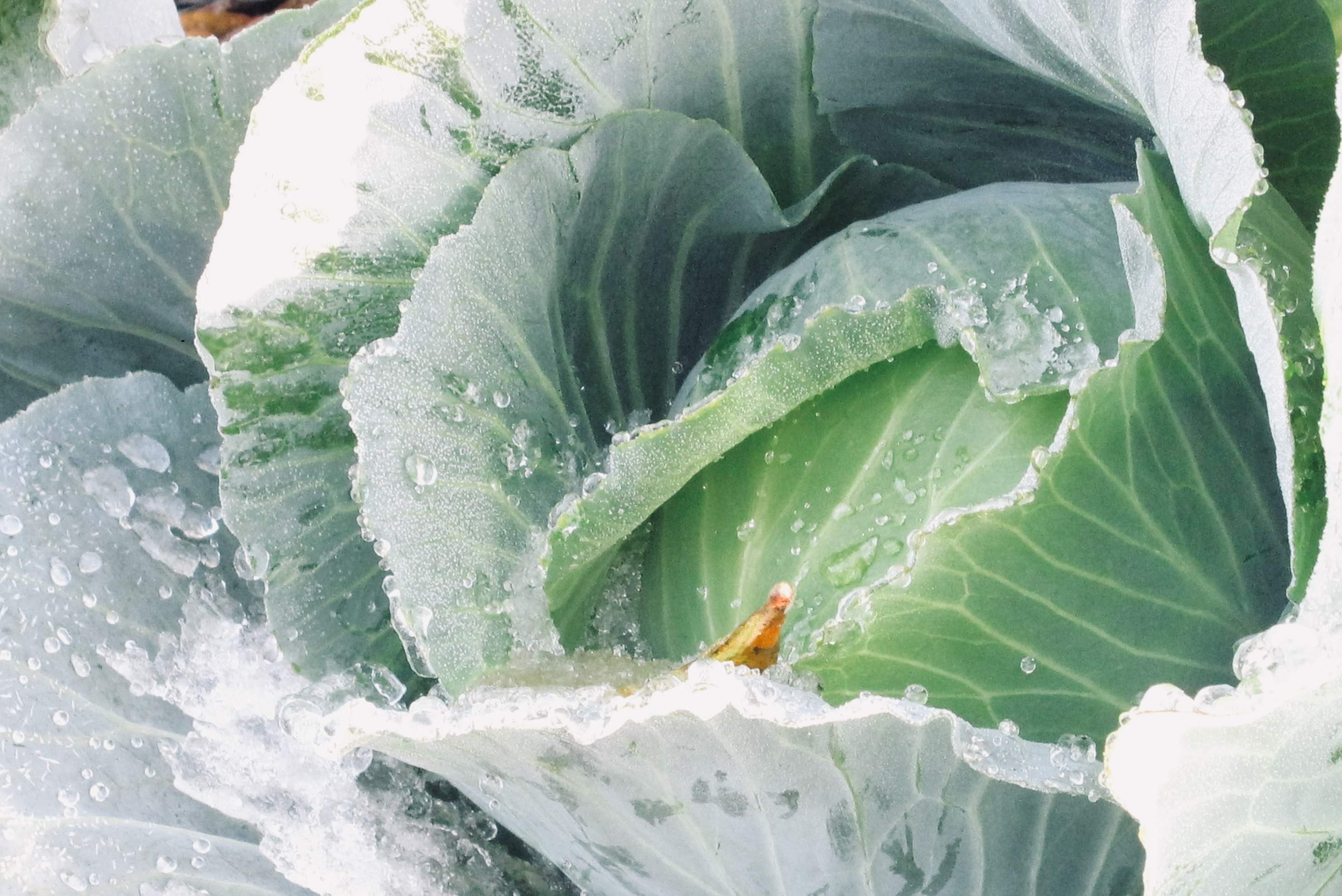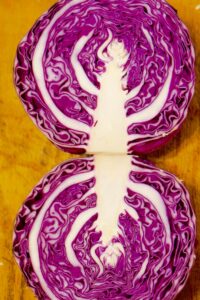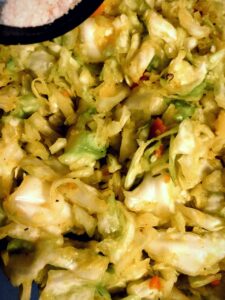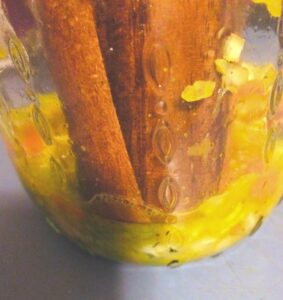
Here is a recipe for Indian-style sauerkraut with an emphasis on adding anti-inflammation ingredients like turmeric (curcumin).
Ingredients
• 1 medium head (around 2 pounds) cabbage (good quality needed)
• 5 fresh cloves of garlic, crushed
• 1 1/2 tsp. turmeric
• 1 tsp. powdered ginger
• 2 tsp. pink Himalayan or sea salt (not iodized salt)
• 1/2 tsp. dried dill
• 1/4 tsp. red pepper flakes
• 1/2 tsp. cracked black pepper (needed for the turmeric to be effective)
• Try 1 sm. onion or 1 lg. carrots shredded
You will Need a 1 quart glass jar (or the next size up) and a Wooden PESTLE

Rinse the cabbage in cool water. Discard damaged or coarse outer leaves and any dark spots etc. Save a large piece to cover the fermenting cabbage later. Cut the cabbage head into quarters so you can remove the core. Discard it, you won’t use it in this recipe.
Use a mandolin slicer or food processor to slices the cabbage. Put the cabbage in a large bowl and mix all the ingredients together. Massage the contents with your hands for several minutes until the cabbage is limp and a brine forms. It’s messy! However, if there isn’t much brine (you squeeze it and moisture doesn’t drip), cover the cabbage for 30 min. to 1 hr. then check it again. Massaging is important and this method works on all leafy vegetables like this. You would massage kale for a raw kale salad in the same way so don’t skip on this messy but important step.
The sauerkraut will be ready when it is salty but not too salty so taste test it. Now the food gets jarred. Pound the cabbage down with a wooden pestle or something similar in the glass jar.
Note: Some say anything will work as long as it is not metal.
 Pack the mixture tightly down into the jar until the jar is full but leave at a little over 1-2 in. in space at the top of the jar. Squish the food down to make sure that there are no air bubbles which will cause the cabbage to spoil. You’ll know you’re on the right track when there is a brine covering the cabbage. Now use that large cabbage piece you saved at the beginning to cover the mixture but do keep that cabbage leaf in the brine so it doesn’t grow mold.
Pack the mixture tightly down into the jar until the jar is full but leave at a little over 1-2 in. in space at the top of the jar. Squish the food down to make sure that there are no air bubbles which will cause the cabbage to spoil. You’ll know you’re on the right track when there is a brine covering the cabbage. Now use that large cabbage piece you saved at the beginning to cover the mixture but do keep that cabbage leaf in the brine so it doesn’t grow mold.
Note: When fermenting cabbage, growing mold is a possibility. Gross! Prevent this by submerging everything in the sat brine. The spare cabbage leaf covering (in the above step) is used to further make sure that all pieces of shredded cabbage are covered in the salty water. If you don’t have enough water, you can take a small glass container with a little water and place that container of water in the jar so its condensation aids in providing moisture. You could also try putting some water in a Ziploc bag, get as much air out of the bag as you can then seal the bag and place it on top of the reserved cabbage leaf.
Put the jar lid on tight, store in a dark area (or at least out of direct sunlight – I’ve used a towel to simply cover the jar) around 50-70 degrees Fahrenheit. Fermented cabbage takes 1-2 weeks but check the process on day 3 to make sure everything is still covered in the brine. If not, use a non-metal utensil to push down the sauerkraut.

Should you see any scum or foam, you can leave it but just remove it. This is a good time to taste test the sauerkraut so while you have the jar right handy, just skim out the foam or scum and any bluish surface mold should it be there. Do this with clean fingers or a non-metal utensil. With fermentation, just play it safe and err on the side of caution. If using a Ziploc bag with water to hold down the mixture, replace it with a new one. Recover the jar tightly.
For your taste test, if the cabbage tastes pickled and has a cooked texture while still remaining crunchy, it’s fermenting fine. Taste test again in a few days if you think more time is not needed.
To stop the fermentation process, fermented sauerkraut gets covered and refrigerated (or stored in a cool pantry or cellar type of area).

I’m not really into fermenting foods so this was more of a “try something new” type of project. If anyone has a better recipe or whatever, feel free to post it in the comments 🙂 -Sarah